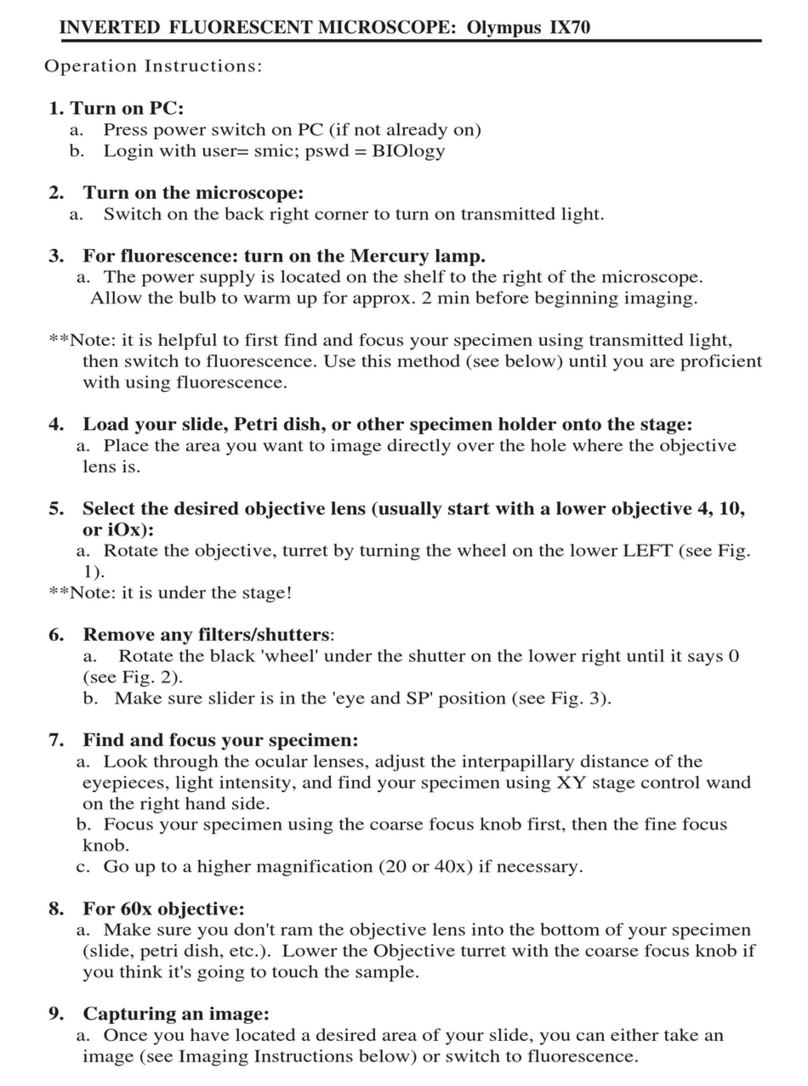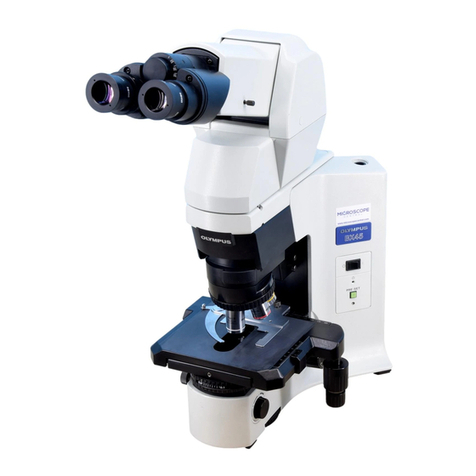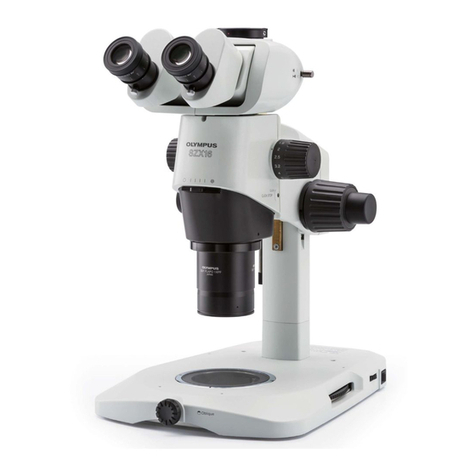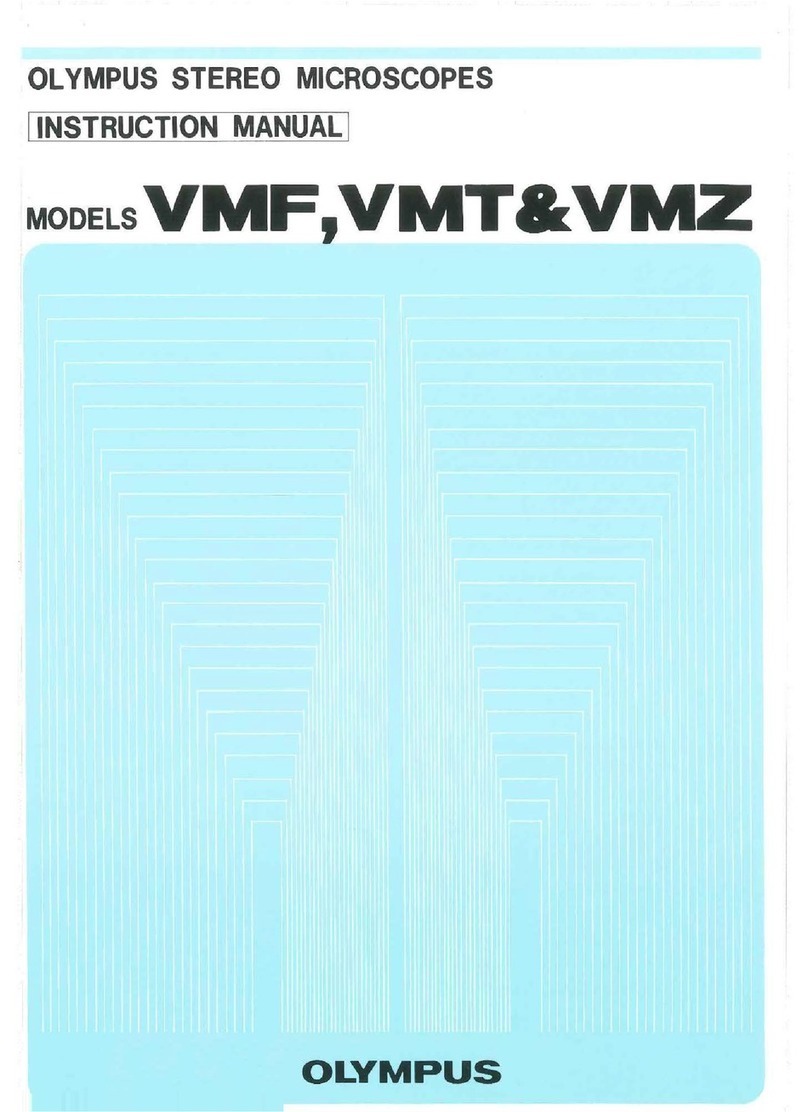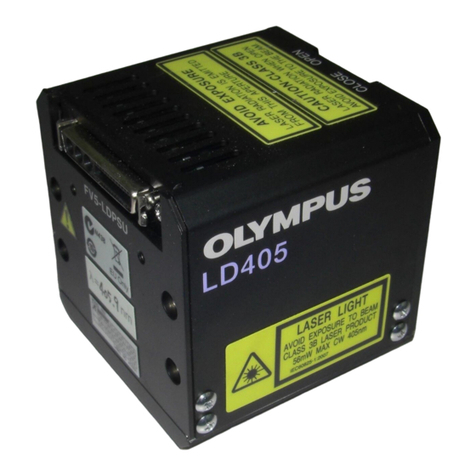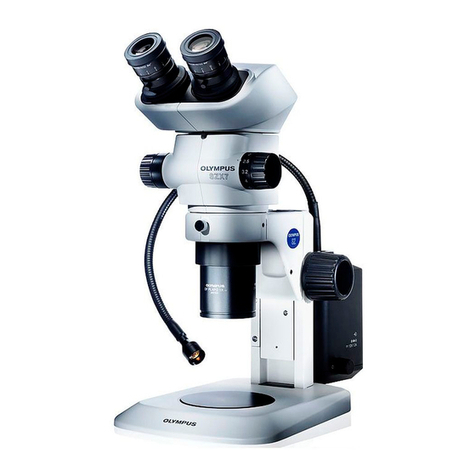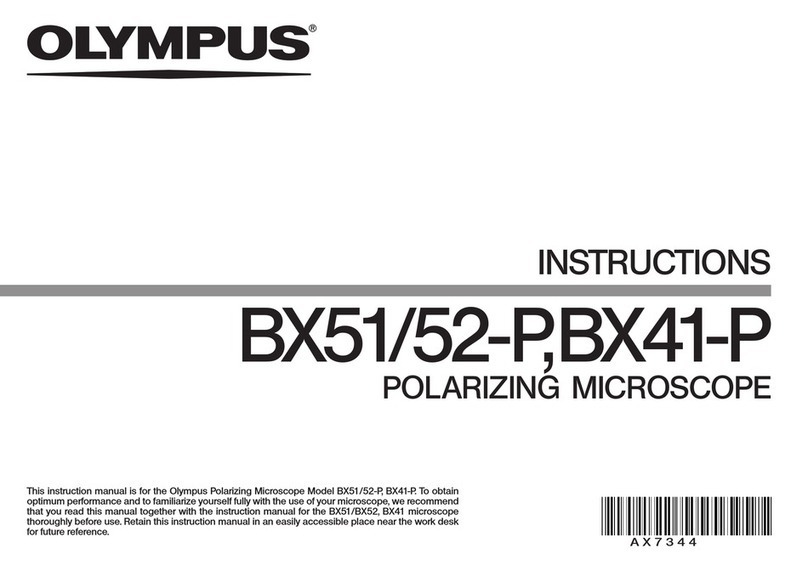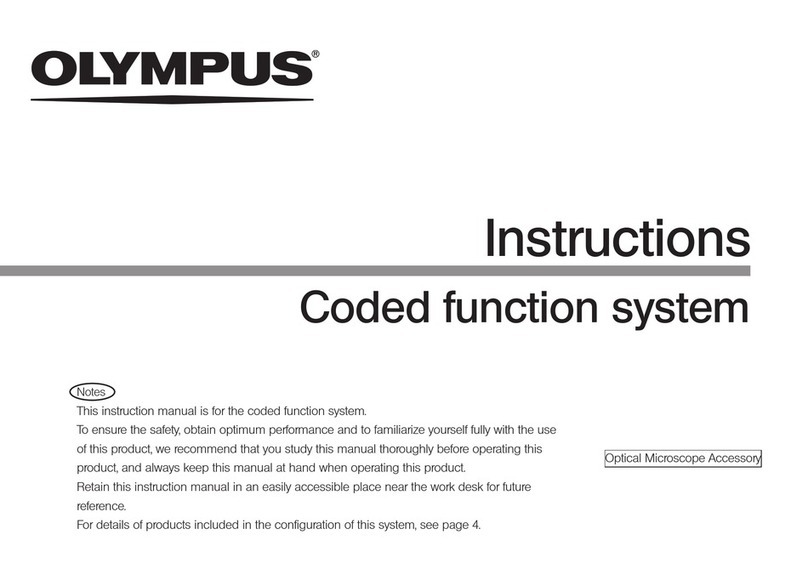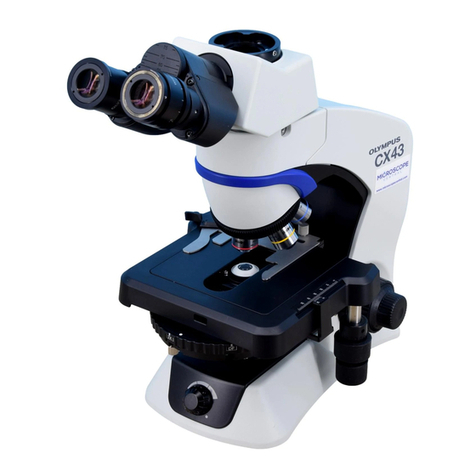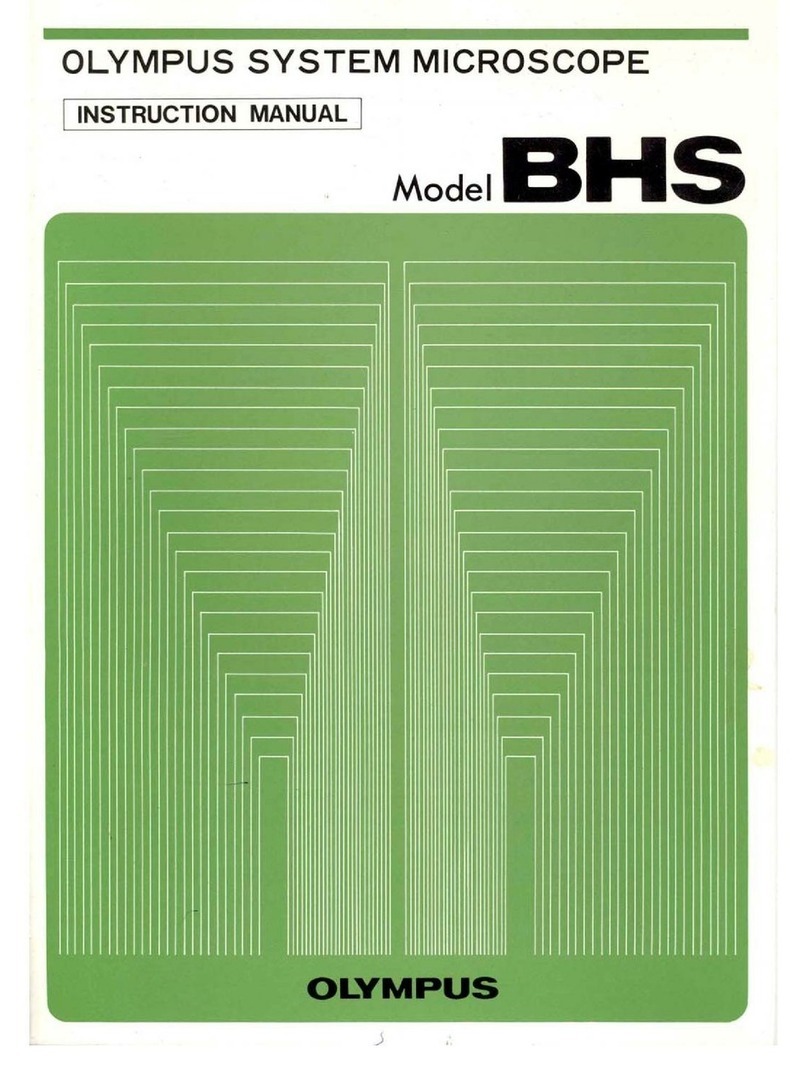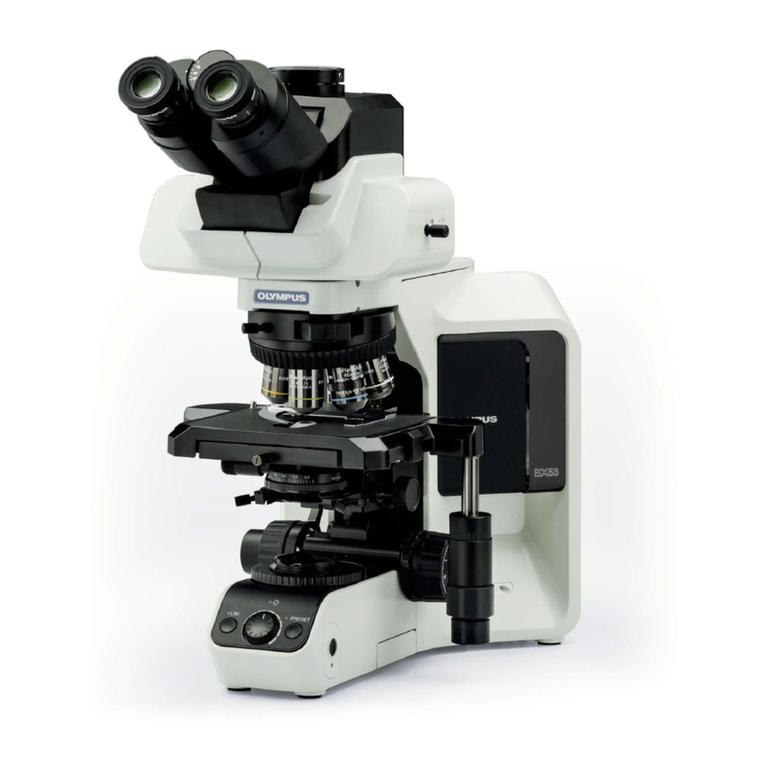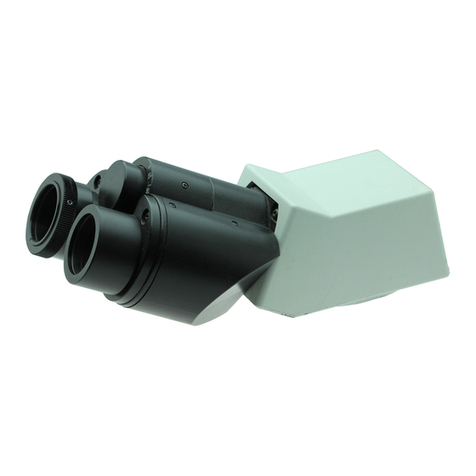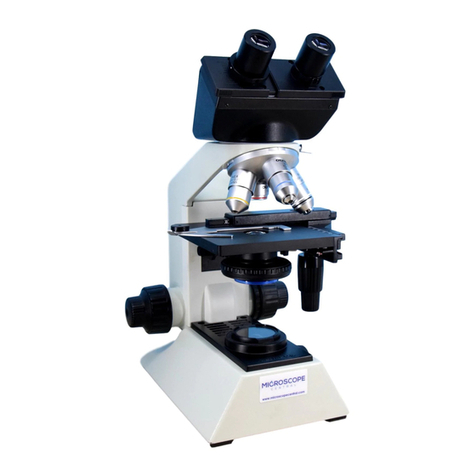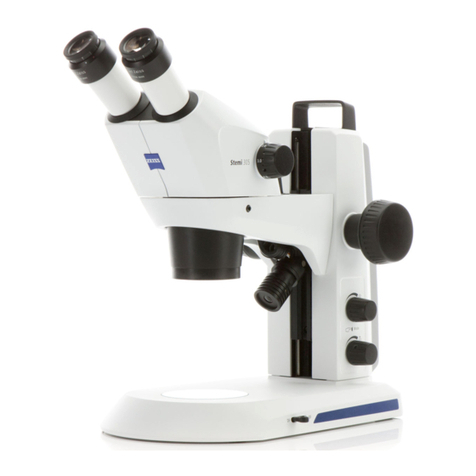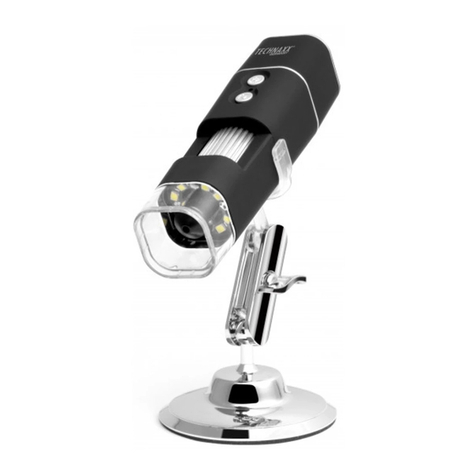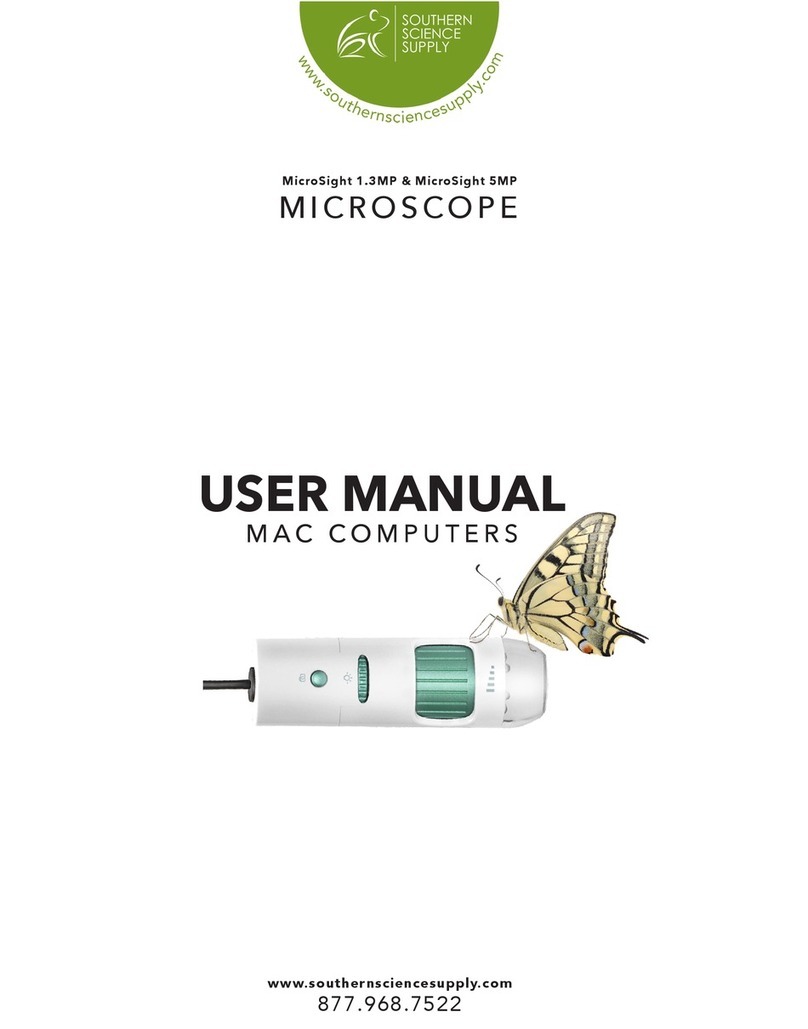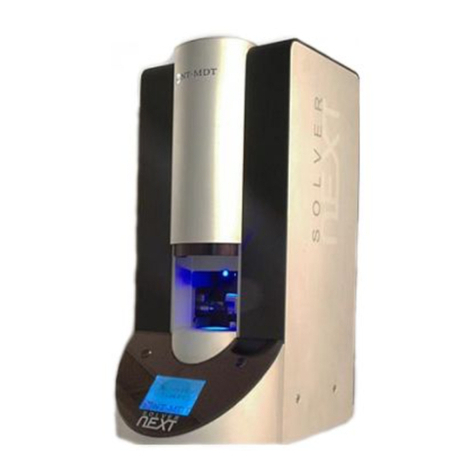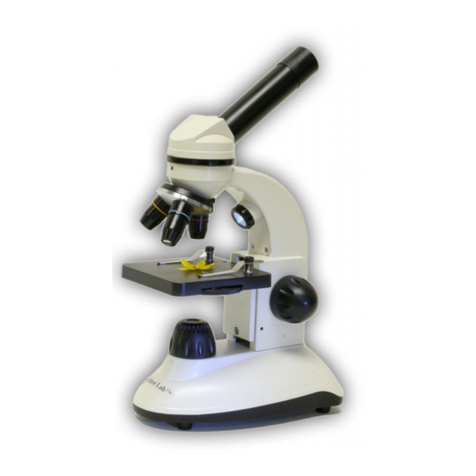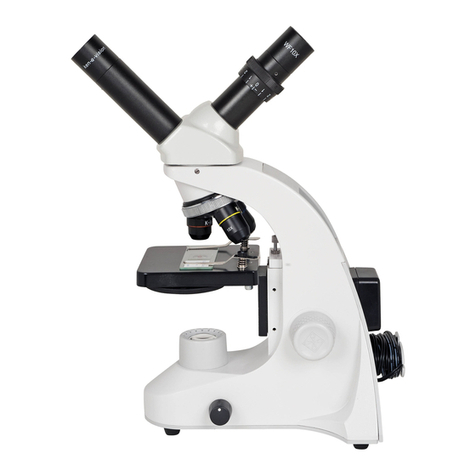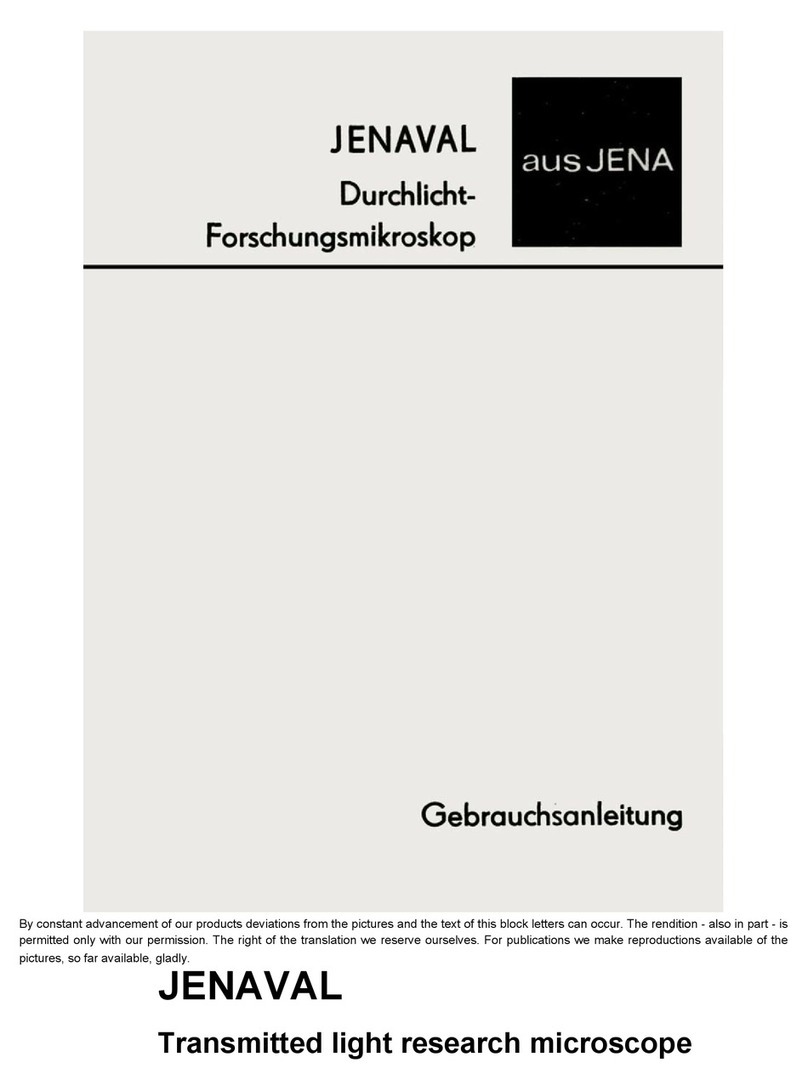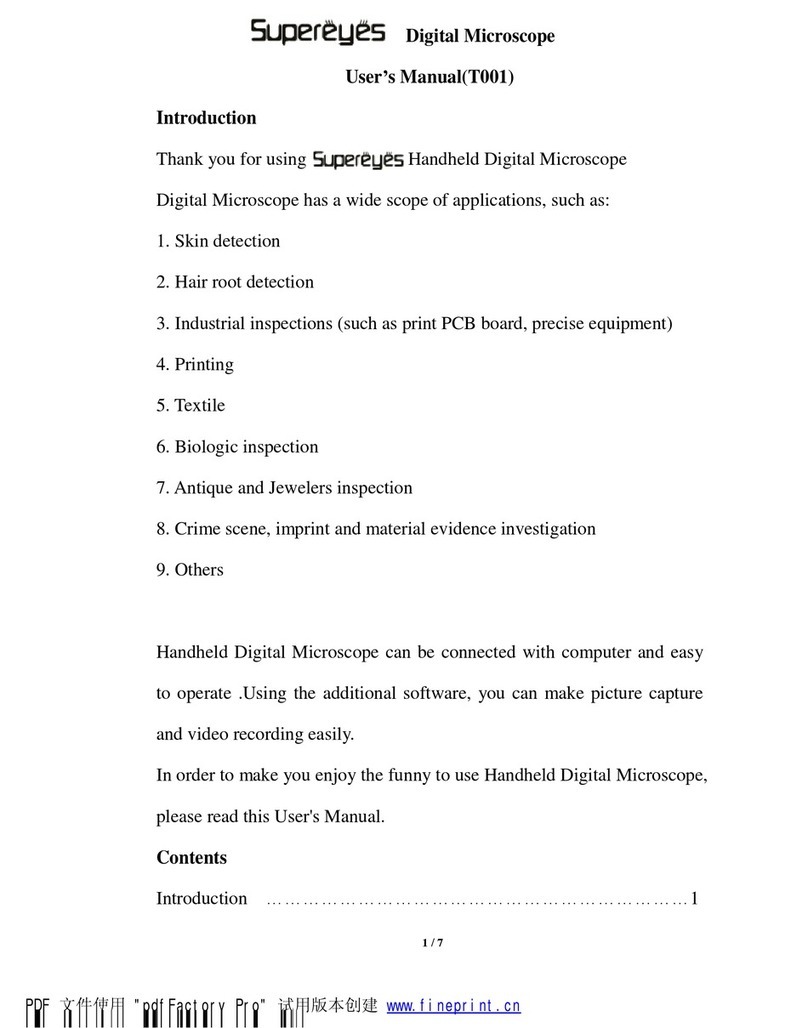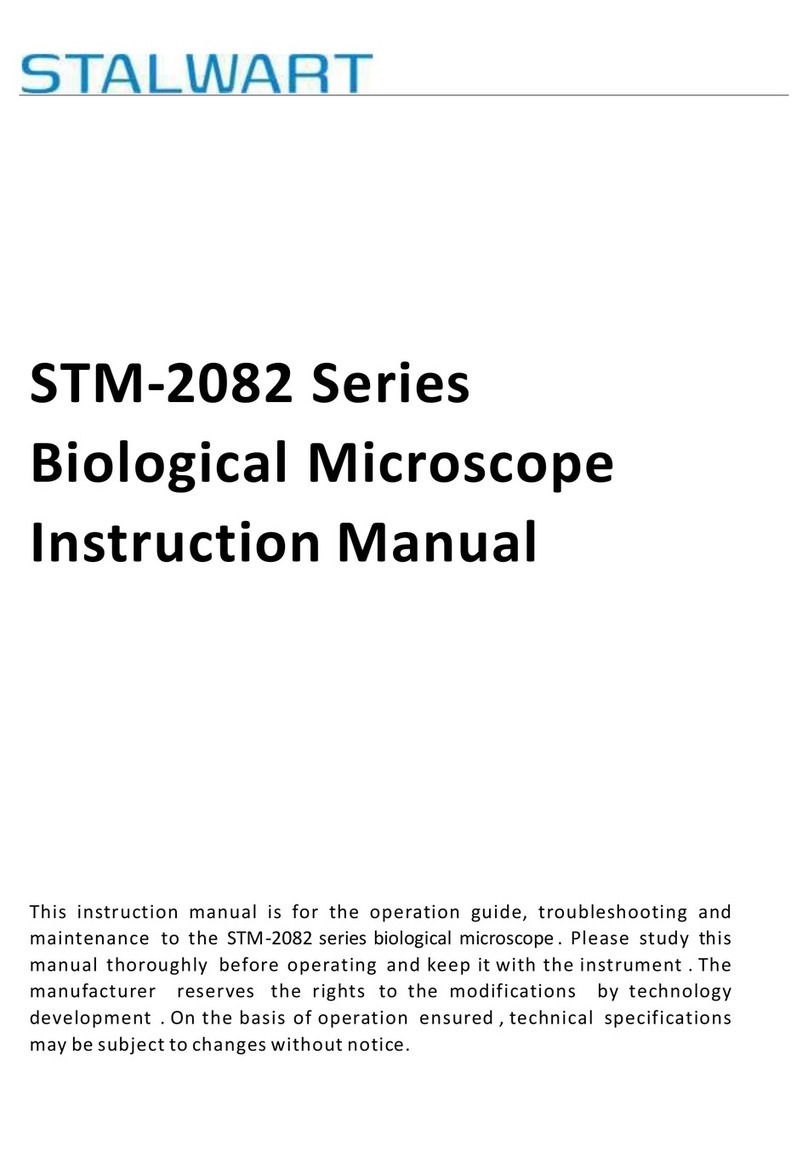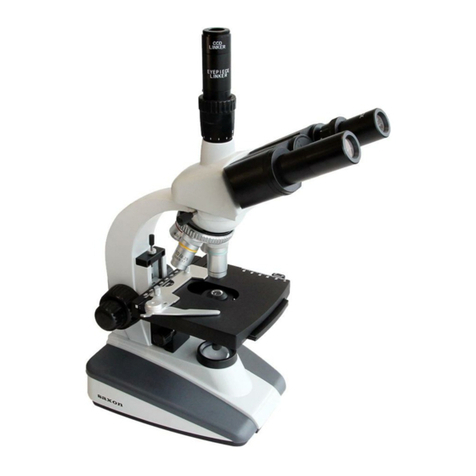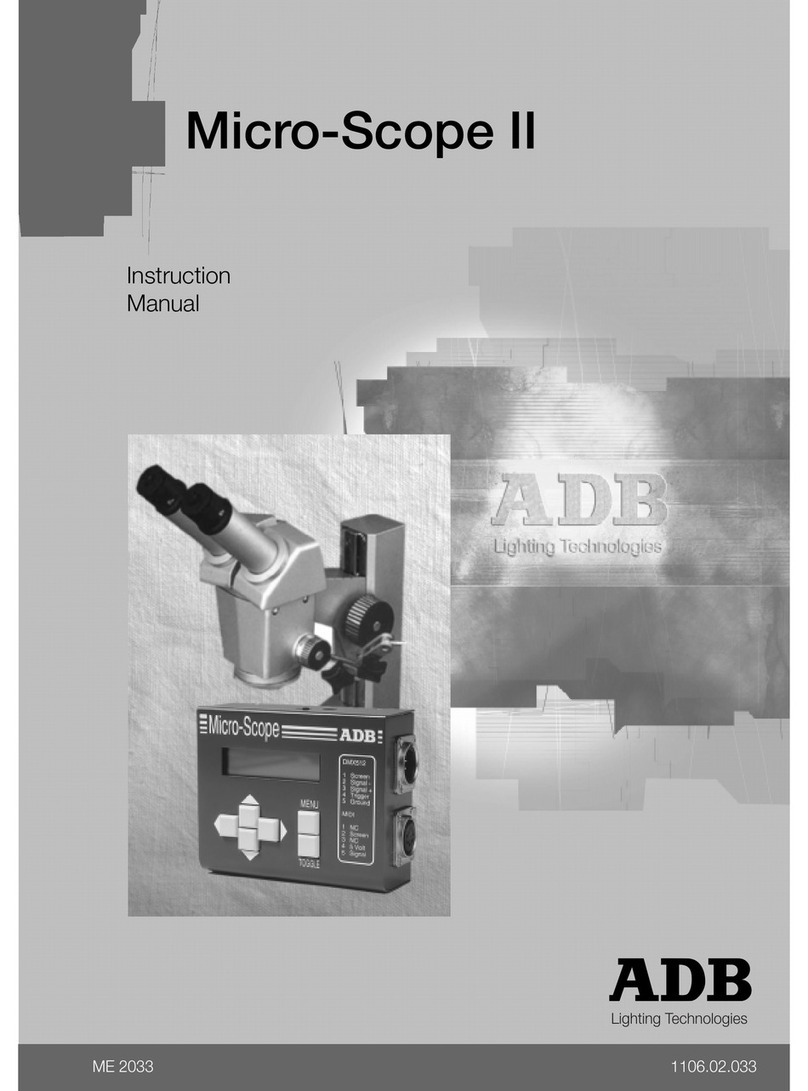Item N.A. W.D.
ACHN 10XP 0.25 6.0mm
ACHN 20XP 0.40 3.0mm
ACHN 40XP 0.65 0.45mm
ACHN 100XOP 1.25 0.13mm
Unmatched sharpness
in orthoscopic and
conoscopic observations.
With a U-CPA conoscopic
observation attachment,
changeover between
orthoscopic and cono-
scopic observation is simple
and quick.
Focusing of conoscopic
images is easy and
accurate. Employing
a Bertrand field stop
makes it possible to obtain
consistently sharp and clear
conoscopic images.
An upgrade in polarization
characteristics.
Thanks to Olympus' sophisticated design
and manufacturing technology, the ACHN-P
and UPLFL-P strain-free objectives reduce
internal strain to an absolute minimum.
Olympus has also totally redesigned its
polarizers and polarizing condensers to
further enhance performance in polarized
light. This means a higher EF* value,
resulting in unmatched image contrast.
To meet a diversity of research and
application requirements, the universal
UPLFL-P Series objectives have been
designed to accommodate a wide range of
observation methods, including Nomarski
DIC and fluorescence microscopy,
in addition to polarized light observation.
*The EF (extinction factor) is the brightness ratio between
parallel and crossed pol-filters. The higher
the EF value, the better the extinction.
An extensive range of compensators
is available.
Six different compensators are available
for the BX51-P microscope, allowing
measurement of various retardation
levels, ranging from 0 to 20λ. For easier
measurement, the direct readout method
is featured. Higher image contrast can be
attained by using a Senarmont* or Brace-
Koehler compensator to change the
retardation level in the entire field of view.
* Used with monochromatic green filter, IF546 or IF550.
qU-CPA wU-P4RE eU-AN360P-2 rU-OPA tU-POC-2
qU-TP530 wU-TP137 eU-TAD rU-CBR1 tU-CBR2 yU-CWE2 uU-CSE iU-CBE oU-CTB
UPLFL-P Series
ACHN-P Series
Item N.A. W.D.
UPLFL 4XP 0.13 13.0mm
UPLFL 10XP 0.30 3.1mm
UPLFL 20XP 0.50 1.6mm
UPLFL 40XP 0.75 0.51mm
UPLFL 100XOP 1.30 0.10mm
Item N.A. W.D.
PLN 4XP 0.1 18.5mm
Measuring range of compensators
Compensator Measurement range Applications
Thick Berek (U-CTB) 0-11,000nm (20λ) Measurement of high retardation level (R*>3λ), (crystals, macromolecules, fiber, etc.)
Berek (U-CBE) 0-1,640nm (3λ) Measurement of retardation level (crystals, macromolecules, living organisms, etc.)
Senarmont compensator (U-CSE) 0-546nm (1λ)Measurement of retardation level (crystals, living organisms, etc.)
Enhancement of image contrast (living organisms, etc.)
Brace-Koehler compensator 1/10
λ
(U-CBR1) 0-55nm (1/10
λ
) Measurement of low retardation level (living organisms, etc.)
Brace-Koehler compensator 1/30
λ
(U-CBE2) 0-20nm (1/30
λ
) Enhancement of image contrast (living organisms, etc.)
Quartz wedge (U-CWE2) 500-2,200nm (4
λ
) Approximate measurement of retardation level (crystal, macromolecules, etc.)
*R= retardation level
For more accurate measurement, it is recommended that compensators (expect U-CWE2) be used together with
the interference filter 45-IF546.
qw
e
r
t
y
u
i
o
q
w
e
r
t
UPLFL-P Series
PLN
ACHN-P Series
*All UIS2 objectives and WHN eyepieces: lead-free eco-glass
